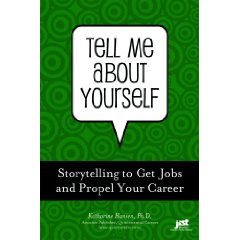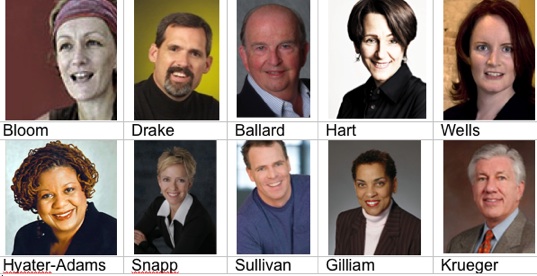By posting a discussion question on Worldwide Story Work (of which you probably need to be a member to see the discussion), my friend and story colleague Thaler Pekar called my attention to a New York Times article by Anand Giridharadas, “Are Metrics Blinding Our Perception?”.
Giridharadas contends that we are in the Age of Metrics — or the End of Instinct. The author asserts that contemporary society is obsessed with measuring and quantifying everything. Giridharadas worries about studying things that are not easily counted. Further, the author frets that “what we know instinctively, data can make us forget.”
Similarly, a blogger at Chamberlain Forum (“a group of people who have been inspired by what has been achieved in neighbourhoods like Balsall Heath in Birmingham: where citizens and communities have become involved in turning around years of neglect”) asks: “Why is it that with all the money spent on collecting and displaying data relating to the success of public services, the everyday stories people tell of how public services work receive relatively little attention?”
“Stories don’t just reflect the culture: they ARE the culture,” the Chamberlain blogger notes.
Chamberlain’s response has been to develop “a technique for listening critically to stories; using storytelling in policy evaluation and development.”
The technique, Structured Dialogue Method (SDM) is “based on an approach developed in Canada by Ronald Labonte and Joan Feather, it uses peoples’ stories and a structured dialogue around them to evaluate and understand the experience of policies in practice.”
Key elements of the approach, the blogger continues, involve:
- A provocative theme — something to generate animated discussion
- A diverse storytelling circle of around 10-15 people
- Two storytellers willing to share their experience
- Active reflection of all participants — not just the storytellers
- Structured questioning — not general discussion
- A skilled facilitator to manage the process
The metrics vs. stories/experiences (or quantitative vs. qualitative) argument reminded me of the argument I made in my dissertation about why I chose to conduct my research by collecting stories rather then collecting data. Because I think some of my sources made some excellent points about the value of stories, I’m excerpting a bit of my methodology chapter here. Read specific arguments for narrative inquiry in the extended entry, and contact me if you’d like a full citation for any of my sources.
The qualitative approach, more accurately called the qualitative paradigm (Lincoln, 2005), has strong proponents in the field of organization studies. Luhman (1998), for example, wrote, “Scientific knowledge, in its drive to be comprehensive (to reduce and simplify), ignores the placing of meaning on human experience which fails to gain insight into people’s lives and social reality.” Patton (2002, p. 196) noted that “qualitative inquiry can be used to discover, capture, present, and preserve the stories of organizations, programs, communities, and families.” Contending that tests and measurements do not offer inquiry into such sensemaking, Lincoln (2005, p. 225) argued that “qualitative methods offer the best possibility for understanding how individuals make sense of and enact their social (and organizational) worlds.”
In sum, “qualitative research is no longer the poor stepchild of quantitative inquiries,” Jones (2004, p. 95) asserted, continuing by saying that over the last decade, “qualitative research has come into its own.”
Rationale for Narrative Inquiry
Progressing downward through a hierarchy in which qualitative research embraces narrative as a sub-category, strong support is evident for narrative as a research method. Champions of narrative inquiry pointed out its salient features:
- “The narrative capability of humans is a unique, fundamental cognitive process, which is crucial to the interpretation and reconstitution of cultural and personal reality” (Sinclair, 2005, p. 56).
- “Narrative analysis allows for systematic study of personal experience and meaning” (Riessman, 2001, ¶ 45).
- “Narrative is the bread and butter of qualitative work … qualitative research is always about story reporting and story making … narrative is a democratizing factor in social science research” (Jones, 2004, p. 96).
Quantitative research, Schostak (n.d., ¶ 10) noted, assumes a certain homogeneity among subjects studied, but “it soon becomes apparent to any social researcher that no one organisation, nor single individual is identical to another.” Schostak argued for using narrative to capture the quintessence of human existence, the importance of narrative structure in analytical research, and the consistency of the narrative form in describing the human experience. Clandinin and Connelly (2000, p. 42) noted, “The contribution of narrative inquiry is more often intended to be the creation of a new sense of meaning and significance to the research topic than it is to yield a set of knowledge claims that might incrementally add to knowledge in the field.”
Patton (2002) recognized narrative as an emergent, specific approach for studying organizations. Of four of Czarniawska’s forms that Patton delineated (p. 118) as ways of using narrative to study organizations, the one that most closely aligns with this study’s methodology is “organizational research that collects organizational stories (tales of the field).”
Cohen and Mallon (2001, p. 48) observed the increasing recognition of stories as “a powerful research tool.” Narrative inquiry is especially appropriate to the current study and its exploration of the role of organizational change in constructing individual career stories.
Several scholars, for example, have made a case for narrative inquiry in careers research. Despite a predominance in careers research of a positivistic approach, Cohen and Mallon (2001, p. 48-49) wrote, “Stories … can be a valuable instrument in illuminating the ways in which individuals make sense of their careers as they unfold through time and space.” “To describe a person’s career is to tell a story,” wrote Cochran, (1990, ¶ 1), who also noted Tiedeman’s and Miller-Tiedeman’s 1985 argument that “career theory and research have been distorted and restricted by an unexamined adoption of a positivistic stance on research, a myopic focus on current practice, and the materialistic and mechanistic worldview of scientism” (¶ 37).
“In the context of societal, organizational, and personal change,” Cohen and Mallon wrote (2001, p. 53), “a focus on individual stories offers a creative technique for studying the process of career creation, re-creation, and improvisation” and provides “potential for elucidating this subjective level and the relationship between individual action and wider social and cultural contexts” (p. 48-49), while Mensinga (n.d.) cited “the challenges and delights of using a narrative approach to explore students’ career choices” (p. 2).
The use of narrative also enables previously unheard voices to speak. Noting the postmodern aspect of collecting stories, Rhodes (1996) made this assertion:
Using storytelling as a research technique aims at giving voice to stories which are not heard in traditional (modern) narrative of organisational theory… The value of the approach is that it creates the opportunity for reflective discussion and comparison of the diversity of story meanings and themes. (¶ 15)
Thus, storytelling opens “discursive spaces for research subjects” (Riessman, 2001, ¶ 46). Walker (2003, p. 46) described narrative inquiry as a responsive and participatory method of data gathering and interpretation,” providing “direct open-ended engagement with people.”
Finally, narrative inquiry aligns with this study’s theoretical framework that reality is socially constructed. In situating the individual as the originator of reality and identity construction during organization change, both Taylor and Ford provided a jumping-off point for considering social construction of the self and career and “the now well-accepted idea that our identities are continually being made and remade through the stories which we tell to ourselves and others, about various aspects of our lives” (Cohen, 2006, ¶ 2). Taylor (1999) and Ford (1999) also supported the theoretical underpinning that “meaning is constructed through the telling of the story” (Walker, 2003, p. 16). Similarly, Lambert (2003) called stories “the large and small instruments of meaning, of explanation, that we store in our memories. We cannot live without them” (p. 1). Further, Polkinghorne (1988) described narrative:
A form of “meaning making” … Narrative recognizes the meaningfulness of individual experiences by noting how they function as parts of the whole. Its particular subject is human actions and events that affect human beings, which it configures into wholes according to the roles these actions and events play in bringing about a conclusion. (p. 36)
Ruona’s observation (2005, p. 234) that “qualitative data deal with meanings,” which are “mediated primarily through language and action,” stands in contrast to Cohen’s and Mallon’s (2001, p. 51) assertion regarding the “inadequacy of positivistic approaches (the stock-in-trade of much career theory) and the need for theoretical approaches which more adequately capture the dynamic ways in which individuals enact their careers.” Noting the tendency for research using the positivist approach to “fall into the trap of thinking in binaries” (Mensinga, n.d., p. 6) such as individual vs. organization, Cohen and Mallon (2001, p. 52) stated that “the conceptual power of the notion of career is precisely that it recursively links the individual to the organization and the wider, changing social world.” Similarly, of the positivist approach to research, Riessman, 2001, wrote this comment:
Verification of the “facts” of lives is less salient than understanding the changing meaning of events for the individuals involved – and how these, in turn, are located in history and culture. Personal narratives are, at core, meaning-making units of discourse. They are of interest precisely because narrators interpret the past in stories, rather than reproduce the past as it was. (¶ 36)
The theoretical framework of the narrative-inquiry portion of this study mirrors that of Bryant and Cox (2004, ¶ 10, citing Guba & Lincoln, 1998): “A constructivist approach to gain an understanding of how individual employees interpret and talk about their experiences of organizational change.” The study finds its roots in constructivism not only because it examines meaning in participants’ change stories but also because it looks at ways that creating meaning through stories can help individuals advance their careers. The research may benefit both scholars and study participants, a reflection of Luhman’s assertion, “Organization studies should strive to enable people to realize an understanding of themselves and the process of social construction of reality.” As in Cohen’s and Mallon’s (2001) description of individuals “gaz[ing] backwards and invest[ing] past events with meaning that resonates with the present” (p. 56), the researcher explored how study participants may have imbued their past experience of organizational change with meaning that they can then apply to their future careers, especially by textualizing meaning in career-marketing communications (resumes, cover letters, interview responses, career portfolios, and personal branding). As Walker (2003, p. 68) described the transcripts and other raw materials she generated through her narrative interviews as “temporary containers for meanings as they emerged,” so, too, were the raw materials in the current study. The researcher then envisioned participants’ meaning in further temporary containers – communications that they might use to propel their careers. Participants may have benefited from the method of inquiry based on the notion set forth by Andrews, Sclater, Squire, and Tamboukou (2003, p. 22) that “in performing narratives we can create new possibilities for identities and actions.” For readers, too, stories offer the opportunity to ponder “vicariously” (Walker, 2003, p. 22) the experience of others and consider how it might relate to their own.
To that end, and in support of “fuller, richer narratives” about and in support of careers and organizational life, it is appropriate to underscore this study’s theoretical framework with Cochran’s lament about the persistent tendency in career research and theory to conceptualize individuals as comprising traits and attributes rather than meaning-filled stories (1990):
What is lost is the meaning of a career as lived, the interior significance that is peculiarly human and that would allow us to form a story rather than a chronicle. In pursuing a career, we live meanings, and lived meanings make a career narratable, intelligible, and coherent. All that would captivate us in a good autobiography, for instance, would be neglected. Meaning (self-concept, values, etc.) enters as an attribute of an organism, not as the living of a story that endows life with significance or insignificance. Dividing people, for instance, into those with high and low meaningfulness is at best merely preparatory. Careers as texts to be interpreted must still be read to understand the reality that supports and authenticates external attributions. Phrased another way, if we are beings who live in story, represent in story, explain through story, understand through story, and have our meaning in story, then chronicle leaves out the most essential part. We must seek ways to go beyond chronicle to fuller, richer narratives. (¶ 24)







